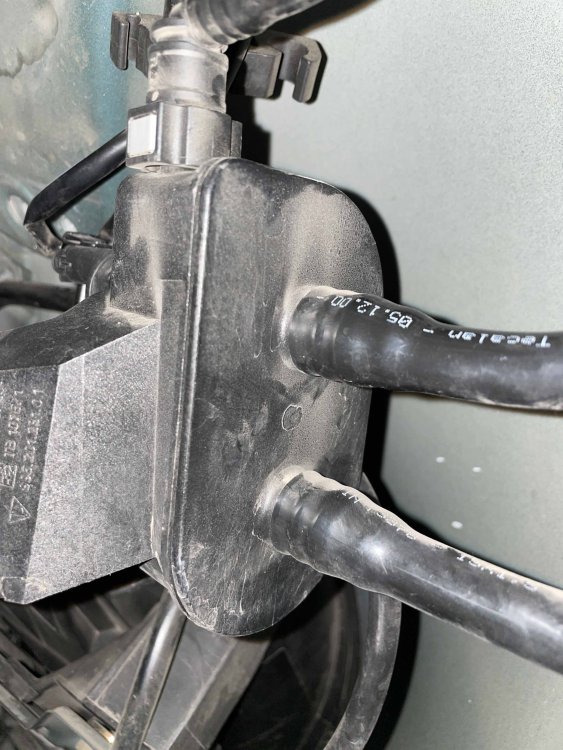This is for a 986, but the 996 front end is identical, so...
I'm having the all-too-common problem of the tank not filling to the top. Constant clicking off of the pump nozzle. Filling the tank with the fuel handle at every angle of 360 degrees didn't work. Pushing the little tab that's normally depressed by the cap didn't work (although the tab is looking kinda worn). This has been going on for a few years, and I'd talked myself into thinking this is just a Porsche thing, but now I want it fixed. It did work, so there's something wrong. No CEL/MIL. No difficulty starting after filling.
After a ton of research, it finally sunk into my pea brain that there are two systems: the main Evaporative Emission Control System (EVAP) that captures stray fuel vapors while operating and sitting, and the intermingled Onboard Refueling Vapor Recovery system (ORVR). It's the ORVR that vents the tank during fueling.
Pushing the fueling nozzle into the filler hole moves a flap that activates a reed switch on the filler pipe. This switches operation from EVAP to ORVR, activating two valves:
- the ORVR valve on top of the fuel tank
- the "fresh air" valve located in the front right wheel arch
With those two valves open the tank can vent to atmosphere during fueling, through the carbon canister.
So why is mine not working?
Some people have a problem with Fuse E6, which powers the ORVR system (grounds out from a telephone connector in the center console). Mine is fine. So next is the two valves. I pulled off the wheel liner to get to the valve in the wheel arch. I can hear and feel it activating. Then I pulled out the battery and the lid under it, getting to the fuel tank. The ORVR valve there I could also feel activating.
Assuming the valves are actually doing something, that leaves the carbon canister and the interconnecting hoses/pipes. The atmospheric line from the fuel cap area seems like a potential culprit and it's subject to collecting debris. My question: how is the line disconnected from the valve plenum without damaging it? See pic
Assuming the lines aren't plugged, and the carbon canister is plugged, wouldn't this set off a CEL/MIL? It is part of the EVAP system as well.
Then there are a couple of potential mechanical issues not related to ORVR air flow. The spitback valve at the end of the filler tube could be sticking or blocked. But woudn't the tank be difficult to fill in its entirety, rather than just near the top? Then there is the issue with the flexible fuel hoses inside tank obstructing the spitback valve. Porsche issued a TSB: Fuel Tank Hose Modification 5/99 2015 or 03/99 2015 (different numbers from different forums) - tie fuel tank hoses out of the way of filler pipe flap. I couldn't find the TSB. Is it applicable to cars past 1999? Does it make sense that like in my case it started about 15 years after the car hit the road? Can this be determined by putting a scope down the filler pipe or would the spitback valve get in the way? I did try this but got chicken and stopped when the scope got to a section of the pipe that looked corrugated.
So my questions, for those of you kind enough to help:
1. How is the pipeline disconnected from the valve plenum without damaging it?
2. Wouldn't a plugged carbon canister set off a CEL/MIL?
3. Does anyone have the TSB? What years is it applicable to? Can this happen many years after the car is sold?
4. Have I missed anything as far as potential failure mechanisms or is there any other advice?
Thanks!






